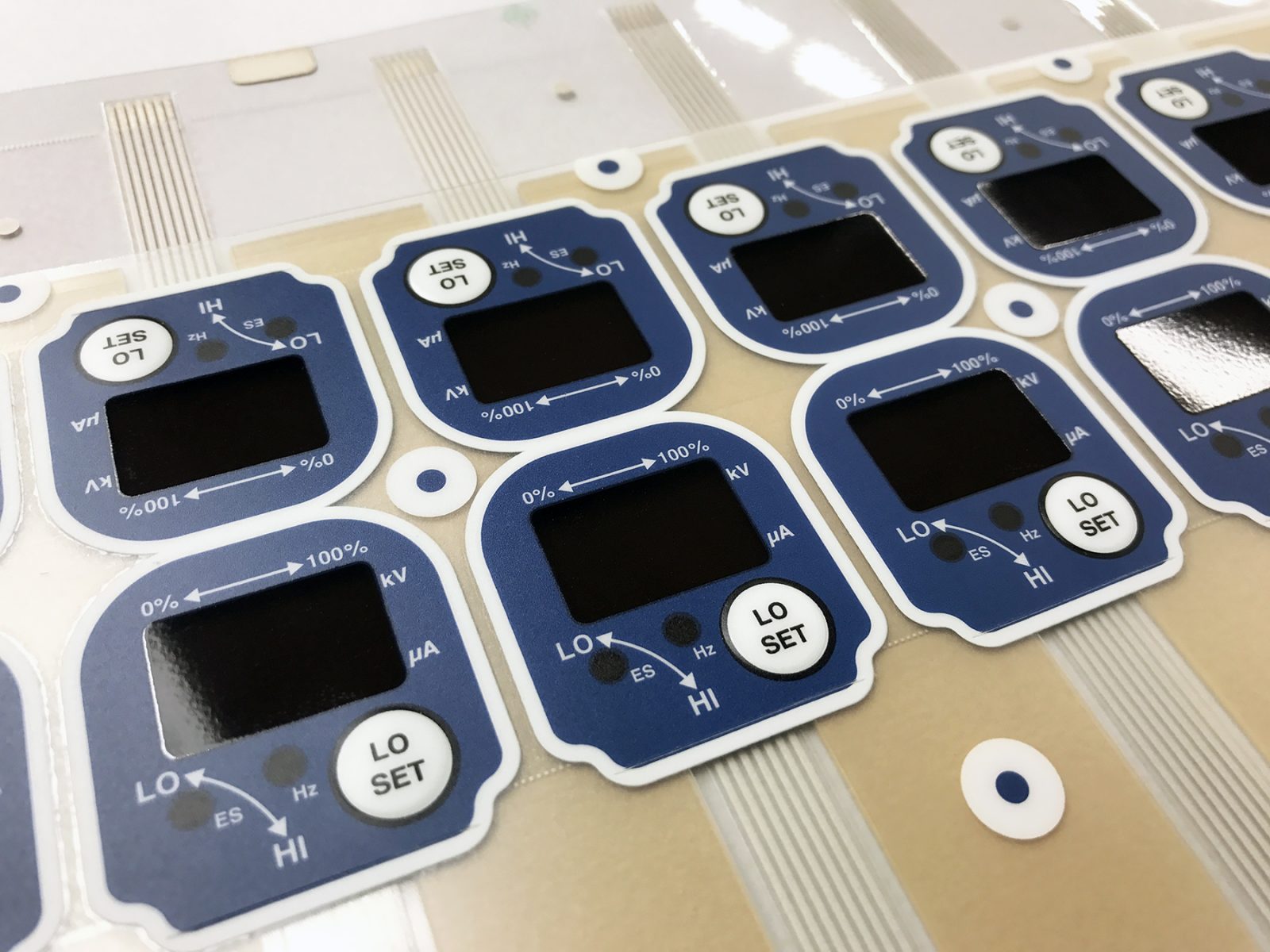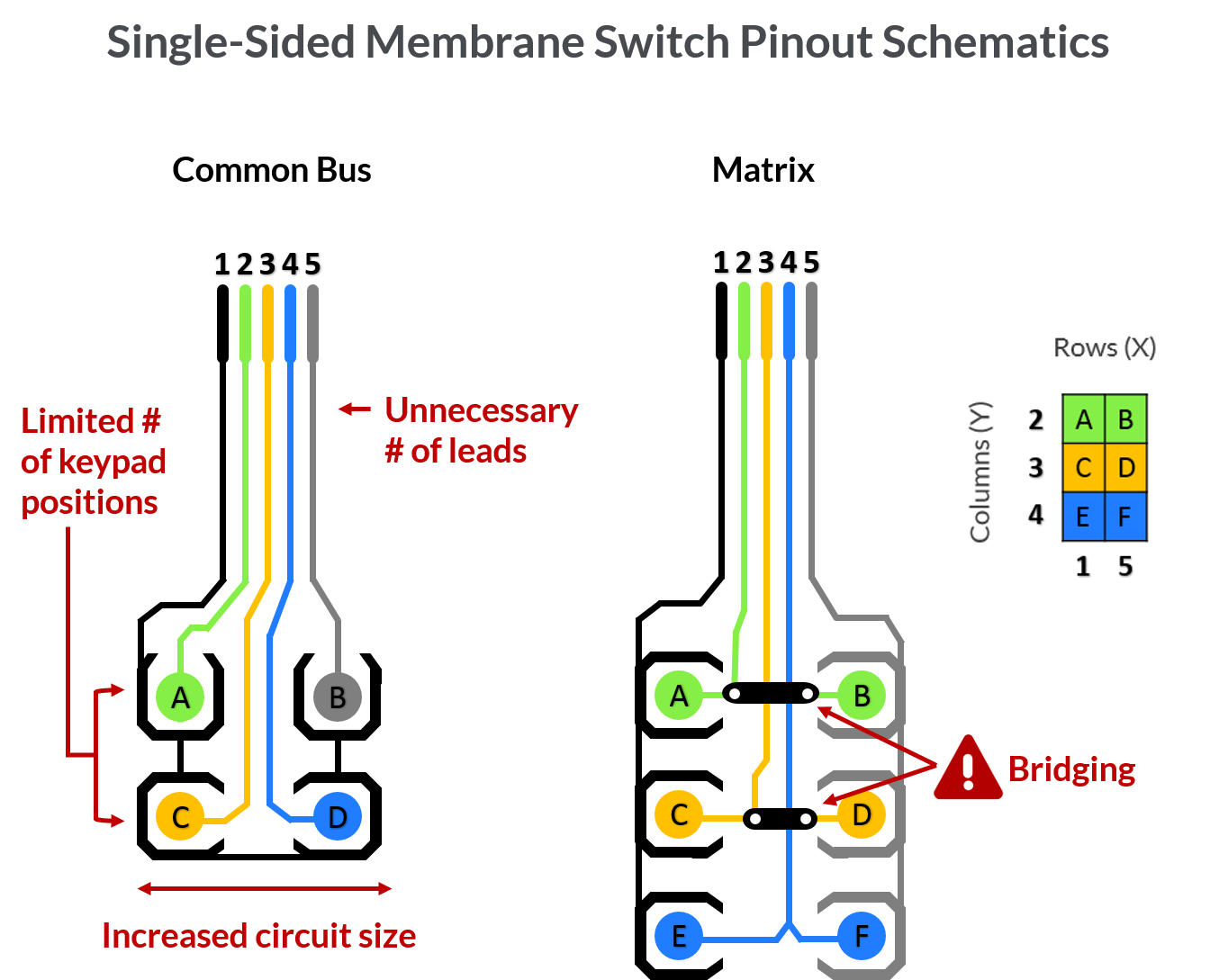How Membrane Switches Boost Performance in Industrial and Customer Applications
How Membrane Switches Boost Performance in Industrial and Customer Applications
Blog Article
Membrane Layer Switches Explained: A Comprehensive Overview to Their Benefits
Membrane layer switches over represent a versatile and sophisticated option for creating user interfaces throughout a variety of fields. As sectors significantly seek trustworthy and reliable control interfaces, comprehending the certain advantages and applications of membrane changes becomes important.
What Are Membrane Switches?

When stress is put on the membrane button, the layers make get in touch with, finishing an electrical circuit. This easy device allows for a large range of applications, from customer electronics to commercial machinery. Membrane layer switches are typically designed to be resistant and water resistant to dirt and contaminants, making them suitable for settings where longevity is vital.
Furthermore, the adaptability of the products utilized in membrane layer switches assists in innovative layouts that can adapt various shapes and dimensions. This adaptability adds to their popularity in diverse areas, including medical gadgets, automotive controls, and home appliances. On the whole, membrane layer changes represent a critical aspect in modern interface technology, connecting the gap in between users and electronic systems.
Secret Benefits of Membrane Layer Switches
Amongst the myriad of individual interface options offered, membrane layer switches stick out for their unique combination of advantages. One of the primary advantages is their lightweight and compact layout, which enables assimilation right into a large range of gadgets without including considerable bulk. This is particularly helpful in applications where room is restricted.
In addition, membrane switches over deal toughness and resistance to environmental variables. They are normally created with products that can hold up against wetness, dirt, and different chemicals, making them ideal for rough conditions. This sturdiness adds to a longer life expectancy contrasted to traditional mechanical switches.
Another considerable benefit is the flexibility in customization. Membrane switches can be published with different graphics, shades, and textures, permitting customized designs that meet particular branding or practical requirements. This adaptability encompasses the number of layers and circuit choices, giving designers with multiple arrangements.
Additionally, the responsive responses provided by some membrane layer switches over enhances customer experience, making them a lot more instinctive to run. The convenience of cleaning and upkeep further strengthens membrane buttons as a practical choice in both consumer and commercial applications. Overall, these vital advantages make them a preferred remedy for several developers and manufacturers
Applications in Numerous Industries
Just how do membrane buttons locate their location throughout diverse markets? Their flexibility and capability make them essential elements in markets ranging from medical care to consumer electronics. In clinical tools, membrane layer switches are made use of for their ease of cleaning and resistance to contamination, guaranteeing hygiene in settings where sterility is crucial.
In the customer electronic devices industry, these buttons give streamlined, user-friendly user interfaces that enhance item aesthetic appeals while maintaining sturdiness against wear and tear. Automotive applications take advantage of membrane layer switches too, where they are made use of in dashboards and control panels, supplying reliable performance in tough problems.
In addition, industrial machinery uses membrane layer switches for control panels because of their robustness, ability to stand up to harsh environments, and customizable layouts that provide to specific operational demands. The food sector leverages membrane layer buttons for their simplicity of usage and resistance to spills, making certain functional efficiency in busy settings.
Eventually, the flexibility of membrane layer switches across these varied applications emphasizes their necessary role in contemporary innovation, enhancing customer interaction while satisfying industry-specific requirements. Their continued advancement assures more assimilation right into emerging fields and cutting-edge items.
Design and Personalization Options
The style and modification options available for membrane switches are vital for tailoring interfaces to satisfy particular user demands and aesthetic preferences. These buttons can be made in various forms, sizes, and layouts, enabling seamless assimilation right into varied applications. The flexibility in style implies that manufacturers can produce distinct interfaces that enhance functionality and keep brand name identity.
Custom structures, colors, and graphics can be used to the surface area of the membrane switch, offering an opportunity for branding and user involvement. Furthermore, backlighting alternatives, such as LED illumination, can be incorporated to boost visibility in low-light conditions, thus boosting capability.
Practical components can additionally be personalized, including tactile responses and actuation pressure, which can be adapted to match different user communications. The selection of products, such as polyester or polycarbonate, permits variants in resilience and ecological resistance, catering to the details needs of various industries.
Ultimately, the considerable layout and modification abilities of membrane layer switches make it possible for companies to develop aesthetically attractive and easy to use user interfaces, ensuring that their items fulfill both visual and useful needs effectively. Membrane Switches.
Considerations for Execution
Executing membrane layer switches over requires careful factor to consider of various factors to ensure optimal performance and go to this website user experience. Among the key considerations is the intended application setting. Variables such as exposure to wetness, severe temperature levels, and chemical compounds can considerably affect the switch's performance and durability. Selecting materials that endure these problems is important.

Another important facet is the switch's style and layout. Ensuring that the tactile responses and actuation force line up with customer expectations improves usability. Conducting customer testing can give valuable insights right into the ideal layout.
In addition, compatibility with electronic elements should be analyzed. The switch's circuitry should align with the total system architecture, making certain trustworthy signal transmission and lessening disturbance.
Additionally, manufacturing approaches and prices need to be examined. The choice in between customized designs and standard models can lead and influence both budget plan time.
Lastly, take into consideration maintenance and repair service. Membrane layer switches may call for particular cleansing and care treatments to keep their look and capability over time. By addressing these considerations, organizations can implement membrane layer buttons that satisfy their operational needs while supplying a positive individual experience.

Conclusion
Finally, membrane switches stand for a flexible and sturdy control interface appropriate for a variety of applications throughout several sectors. Their compact style, resistance to ecological elements, and customizable features enhance individual experience visite site while conference specific branding demands. As innovation remains to progress, the importance of membrane layer buttons in modern gadgets stays substantial, using both performance and visual allure. Future innovations will likely additionally broaden their applications and performance in different environments.
Membrane layer switches represent a functional and sophisticated solution for creating individual interfaces across a selection of markets.Understanding the fundamental components of modern digital interfaces, membrane switches are a type of user interface device that consist of versatile, slim layers of material. In general, membrane switches see here represent a critical aspect in modern-day individual interface innovation, connecting the space between individuals and electronic systems.
Among the myriad of user interface options available, membrane layer switches over stand out for their special mix of benefits.The style and personalization choices available for membrane layer buttons are important for tailoring user interfaces to fulfill specific user needs and visual choices.
Report this page